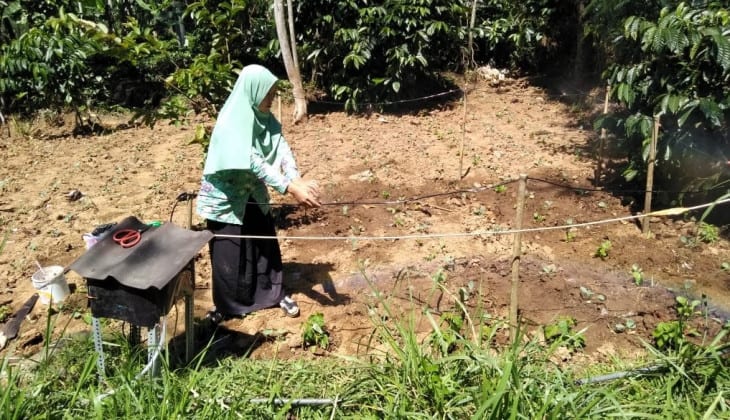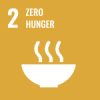
Since the end of June, Dieng Plateau in Central Java has experienced frost caused by below freezing temperatures.
The frost has an impact on agricultural crops in the area. Many of the vegetables cultivated by the local farmers, such as potatoes, carrots, cabbage, chilies, and tomatoes have been covered in the frost.
When frostbite occurs, farmers generally water their agricultural land to melt the ice that sticks to the plants. However, watering by farmers will cause excess water in the soil (drainage stress) and increase the potential for pests and plant diseases. This happens because the amount of water that is poured exceeds the water needs of the plants.
When the dewdrops freeze, farmers usually water their agricultural land the agriculture to melt the ice that sticks to the plants. However, this will cause excess water in the soil (drainage stress) and increase the potential for pests and plant diseases. This happens because the amount of water exceeds the plants’ needs.
“Watering the young plants will cause damage to the stems, branches, and leaves, because the frost and water hitting the plant will add a burden to the plant,” said Kholishotul Ma’rifah, Agricultural Technology student of UGM on Monday (1/7) on campus.
Along with fellow students Setiyawati, Denis Tio Yudhistira, and Muhammad Fiqi Rohman, and under the guidance of Dr. Ngadisih, they introduced a method to resolve the problem as part of the Student Creativity Program for Technology (PKM-T).
Mist Irrigation Pencegah Embun Upas (MISI HEMPAS) is a method made in order to improve agricultural productivity in Leksana village of Banjarnegara regency.
The equipment was installed on the farm land owned by a member of the Tamansari group, Sugiyanto, on Tuesday (25/6) which measures 2 m x 3 m. The chili plants were planted with automatic sprinkle irrigation, while another plot of land was given control treatment or manual sprays.
The automatic sprinkle irrigation system was made by using water pumps to distribute the water from the tanks. The pump was connected to an Arduino Uno based microcontroller using a DHT11 sensor to read the temperature and humidity. A relay 1 pin was installed on the automatic mode, serving as a switch connected between the pump and the microcontroller.
This sprinkle irrigation set had been tested in the Laboratory of Land and Water Resources Engineering UGM and the result showed uniformity of drips at 80%. The sprinkle was set ON when the temperature reached below 10°C and the humidity level was over 80%. The tool would go OFF when the temperature rose above 10°C and the humidity was under 80%.
“This method is expected to help farmers in Dieng resolve the frost problem so that the agricultural productivity can be maintained,” she concluded.


